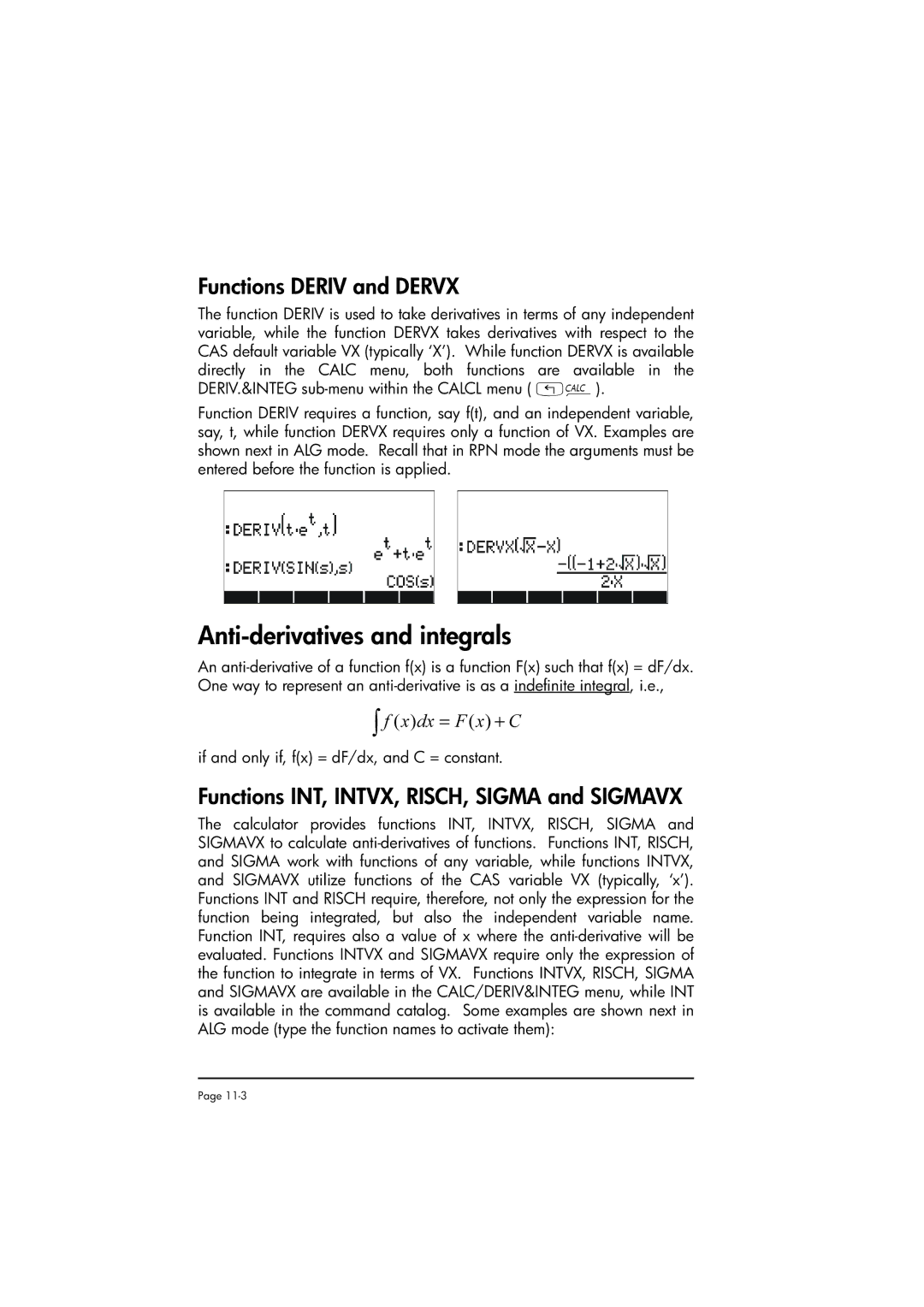Functions DERIV and DERVX
The function DERIV is used to take derivatives in terms of any independent variable, while the function DERVX takes derivatives with respect to the CAS default variable VX (typically ‘X’). While function DERVX is available directly in the CALC menu, both functions are available in the DERIV.&INTEG sub-menu within the CALCL menu ( „Ö).
Function DERIV requires a function, say f(t), and an independent variable, say, t, while function DERVX requires only a function of VX. Examples are shown next in ALG mode. Recall that in RPN mode the arguments must be entered before the function is applied.
Anti-derivatives and integrals
An anti-derivative of a function f(x) is a function F(x) such that f(x) = dF/dx. One way to represent an anti-derivative is as a indefinite integral, i.e.,
∫f ( x)dx = F ( x) + C
if and only if, f(x) = dF/dx, and C = constant.
Functions INT, INTVX, RISCH, SIGMA and SIGMAVX
The calculator provides functions INT, INTVX, RISCH, SIGMA and SIGMAVX to calculate anti-derivatives of functions. Functions INT, RISCH, and SIGMA work with functions of any variable, while functions INTVX, and SIGMAVX utilize functions of the CAS variable VX (typically, ‘x’). Functions INT and RISCH require, therefore, not only the expression for the function being integrated, but also the independent variable name. Function INT, requires also a value of x where the anti-derivative will be evaluated. Functions INTVX and SIGMAVX require only the expression of the function to integrate in terms of VX. Functions INTVX, RISCH, SIGMA and SIGMAVX are available in the CALC/DERIV&INTEG menu, while INT is available in the command catalog. Some examples are shown next in ALG mode (type the function names to activate them):

